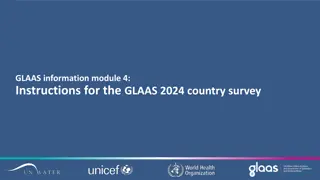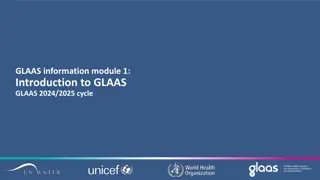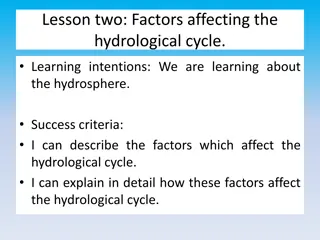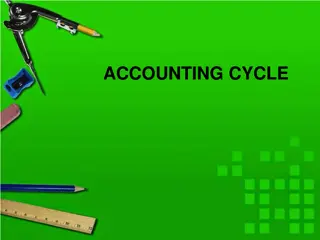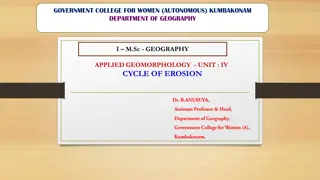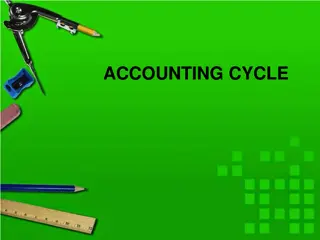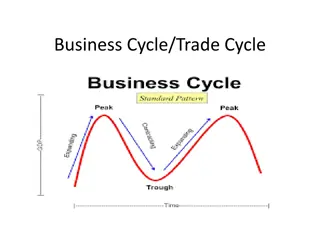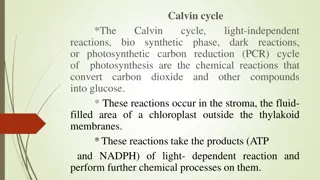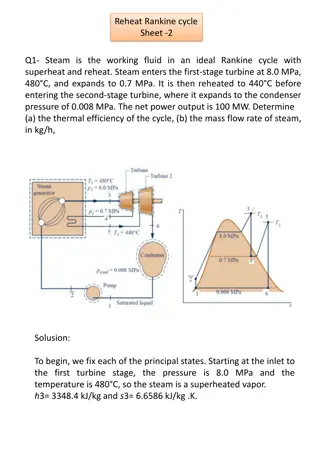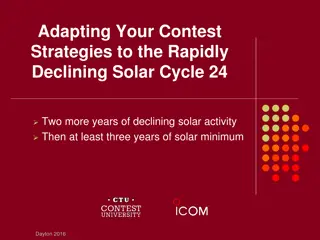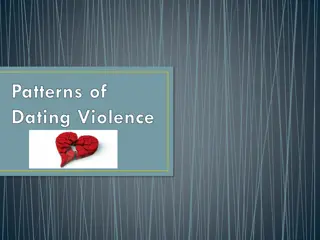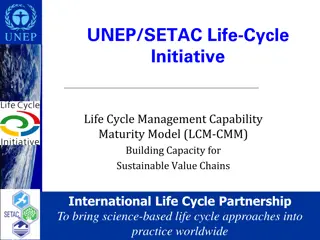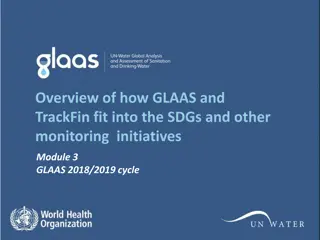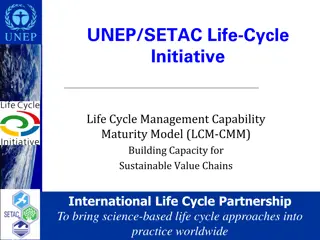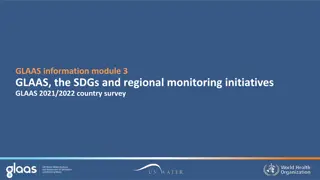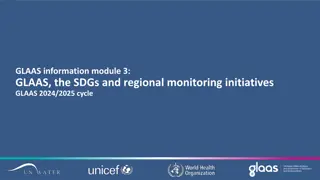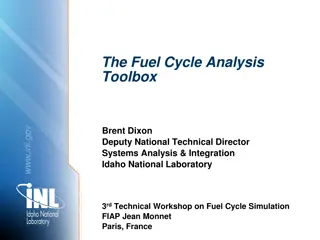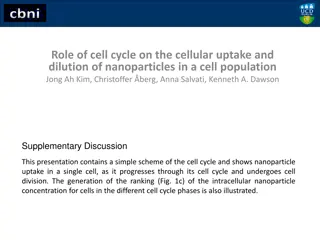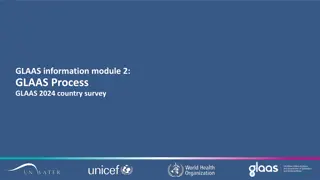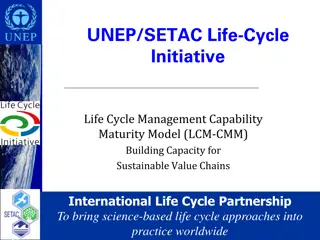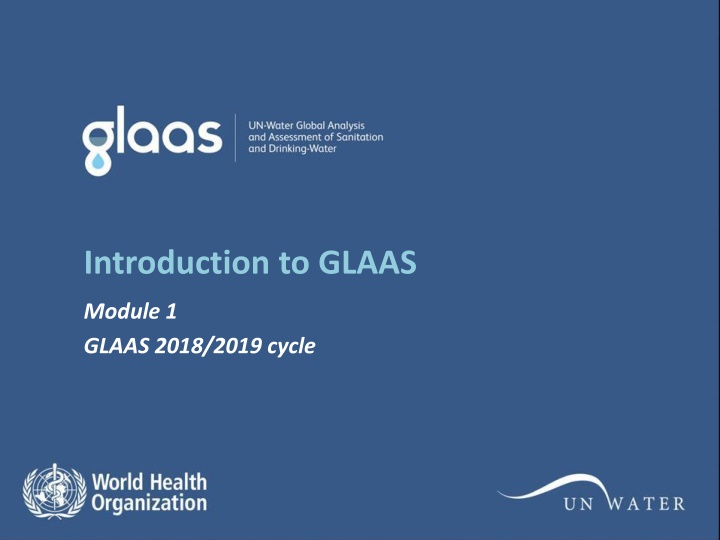
Overview of GLAAS 2018/2019 Cycle: What's New?
GLAAS (UN-Water Global Analysis and Assessment of Sanitation and Drinking-Water) provides a biennial update focusing on policy frameworks, institutional arrangements, and more in support of sanitation, drinking water, and hygiene sectors. The 2018/2019 cycle emphasizes national WASH policies, plans, and targets with enhanced questions to capture target-setting processes and SDG monitoring alignment. This update highlights the importance of collaboration, data collection, and the benefits of GLAAS to countries.
Download Presentation

Please find below an Image/Link to download the presentation.
The content on the website is provided AS IS for your information and personal use only. It may not be sold, licensed, or shared on other websites without obtaining consent from the author. If you encounter any issues during the download, it is possible that the publisher has removed the file from their server.
You are allowed to download the files provided on this website for personal or commercial use, subject to the condition that they are used lawfully. All files are the property of their respective owners.
The content on the website is provided AS IS for your information and personal use only. It may not be sold, licensed, or shared on other websites without obtaining consent from the author.
E N D
Presentation Transcript
Introduction to GLAAS Module 1 GLAAS 2018/2019 cycle
What is GLAAS? GLAAS: UN-Water Global Analysis and Assessment of Sanitation and Drinking-Water Implemented by the World Health Organization on behalf of UN-Water A global, biennial update on the policy frameworks, institutional arrangements, monitoring systems, human resources base and finance streams in support of sanitation, drinking-water, hygiene sector
GLAAS areas of work SDG TrackFin monitoring GLAAS data collection and reports Collaboration and partnerships UN- Water GLAAS
GLAAS data collection and reports: Purpose and objectives Monitor the inputs required to extend and sustain WASH systems and services to all, especially the unserved and disadvantaged groups Support country-led processes that bring together the many institutions and actors that are involved in delivering WASH services Identify drivers and bottlenecks of progress, highlight knowledge gaps and assess strengths and challenges across countries Collect data from countries and external support agencies
Benefits of GLAAS to Countries Provides a useful situation analysis of the WASH sector Identifies information gaps Helps decision-makers define priorities and devise plans Brings different stakeholders together Contributes to SDG monitoring
GLAAS 2018/2019 cycle Whats new? Thematic focus: This cycle will focus on national WASH policies, plans and targets including: More comprehensive questions on national WASH policies and plans Focus on national targets to capture national target-setting processes and alignment with SDG 6.1 and 6.2 monitoring ladders GLAAS and JMP are working together to ensure the work is complementary Questions for SDG monitoring have been incorporated into the survey Revised question on local participation (A14) for SDG 6.b Revised question on external funding (D9) for SDG 6.a The scope of these questions has been expanded to include integrated water resources management
GLAAS 2018/2019 Cycle Whats New? cont. A revised survey guidance document Outlines the GLAAS process Gives general survey instructions Provides additional information for each question GLAAS survey format is a fillable PDF User friendly with fillable text boxes and tick boxes To ensure functionality of the fillable PDF, please use an updated version of Adobe Acrobat Reader DC (https://get.adobe.com/reader/) Can save answers and return back to the PDF survey GLAAS country survey annex is a separate word document for any text or tables that do not fit into the fillable PDF
UN-Water GLAAS 2019 Report Information collected will be presented in the 2019 UN-Water GLAAS report The GLAAS 2019 report will have a focus on national WASH policies, plans and targets The GLAAS 2019 report is expected in Q2 2019
Overview of GLAAS 2019 report Inputs to GLAAS 2019 report External Support Agency (ESA) survey Country survey Other data sources 100+ countries From all WHO regions 30+ ESAs Bilateral donors Multilateral donors NGOs WHO/UNICEF JMP OECD data World Bank data
GLAAS 2018-2019 data collection Data collection to be launched: July 2018 Deadline for submission: 15December 2018
Thank you! For additional information or assistance please contact glaas@who.int

